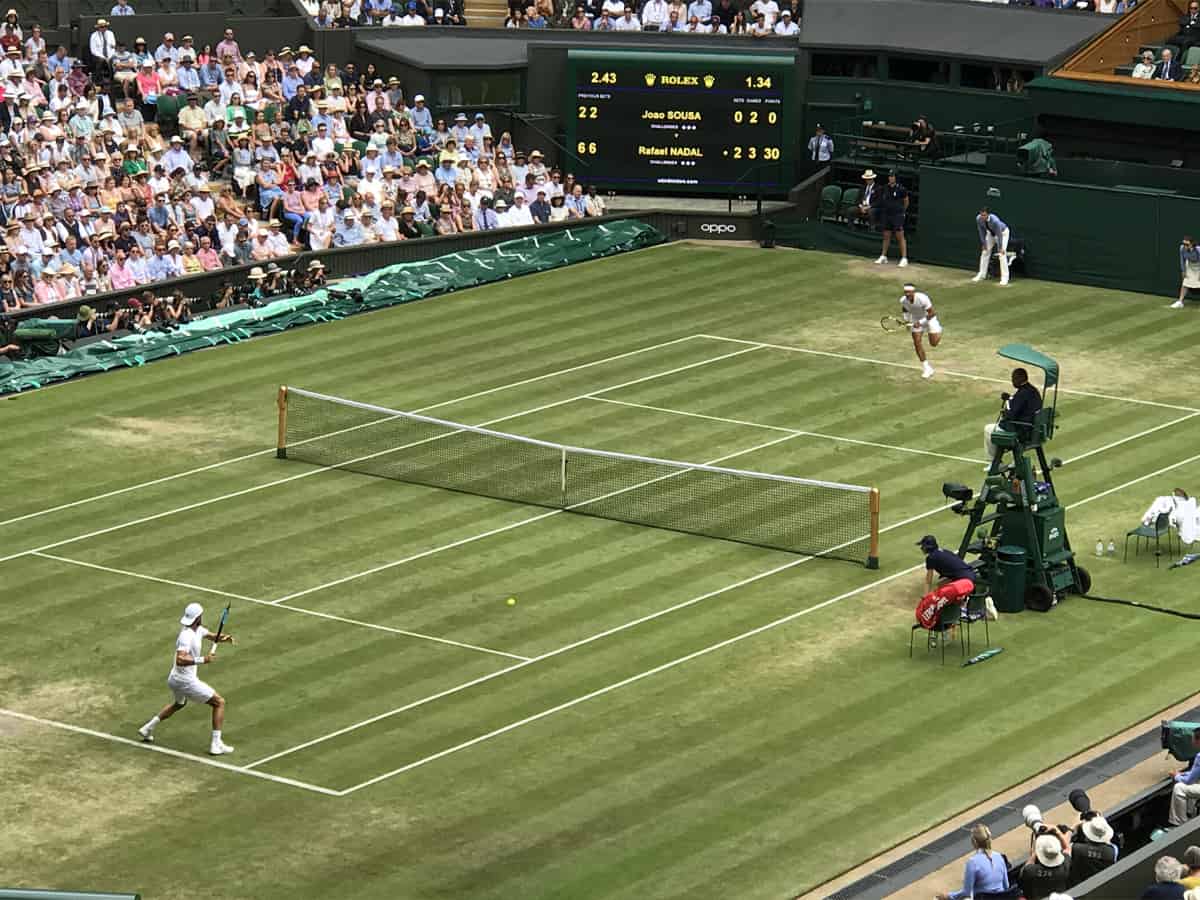
The prestigious Wimbledon tennis championships, now 146 years old, have had a long history of legendary competitions and great rivalries. Many articles have been written about the famous players who were engaged in fierce battles on the courts. But each year there is also an equally ferocious competition that takes place behind the scenes and away from the spotlight.
Hundreds of youngsters compete with each other to be selected as ball boys and ball girls for this esteemed tournament. Their dedication and hard work helps the event to be conducted in an orderly manner.
We have all seen on our television screens the alert and quick-moving boys and girls who stand outside the court and retrieve the ball whenever necessary. But there is an interesting story behind their participation in this event.
The inaugural Wimbledon championship in 1877 had only the Gentlemen’s Singles. In 1884, the Ladies’ Singles competition was added to the schedule, and in 1913 the Ladies’ Doubles and Mixed Doubles events were added.
As the number of events and the number of players increased, it became necessary to deploy trained staff to organise the tournament. That was when the ball boys came into the picture. In the 1920s the boys were selected from among the students of the Shaftesbury Children’s Home. It was an institution for underprivileged children and orphans. The idea was to give them a chance to do something useful and also earn some pocket money.
From 1947 the children were recruited from Goldings School which was run by the charity organisation called Barnardo’s. From 1969 onwards more schools have been involved in the project. Nowadays the children known as the BBGs (Ball Boys and Girls) are drawn from different schools across the UK.
At the end of the event, each BBG receives a certificate, a can of used balls, a group photograph, and a programme. The BBGs are also paid about £160 to £250 per person depending on the number of days served.
But before they enter the court there is a strict selection process. The selection policy attempts to ensure that fifty percent of those selected are boys and fifty percent are girls.
Prospective BBGs are first nominated by their school’s headmaster. Then, to be selected, a candidate must pass written tests on the rules of tennis, and pass fitness, mobility, and alertness tests. Successful candidates then commence an officially monitored training phase, starting in February of every year, in which the final BBGs are chosen after a thorough assessment of their progress.
Nothing is left to chance by the organisers. After months of hard training, the BBGs crowd around the bulletin board to see if their names are on the final list.
One man named Sam Hill, who was selected when he was a 15-year-old schoolboy, told the BBC: “Everybody was looking at the noticeboard to see if they’d been selected. That caused a few tears for some and delight for others. If you got selected, you could walk with your head high. As for me, my life changed after my selection. The competition for the BBG spots is just as fierce as the matches you see on the courts.”
The BBGs have had varied experiences. Some kind-hearted players encourage them by speaking to them on the court and then the TV cameras focus on the youngsters also. However, some players behave rudely and vent their frustration on the teenagers. But regardless of what happens, these young boys and girls do their duty efficiently. Thanks to their efforts we see the matches going on smoothly without irritating interruptions.
